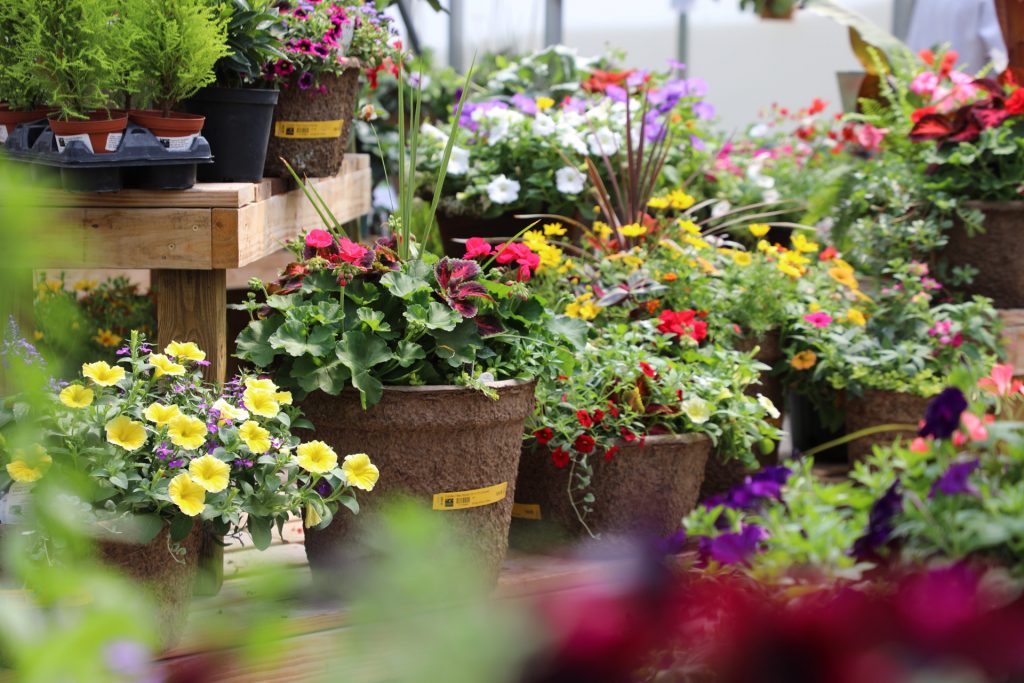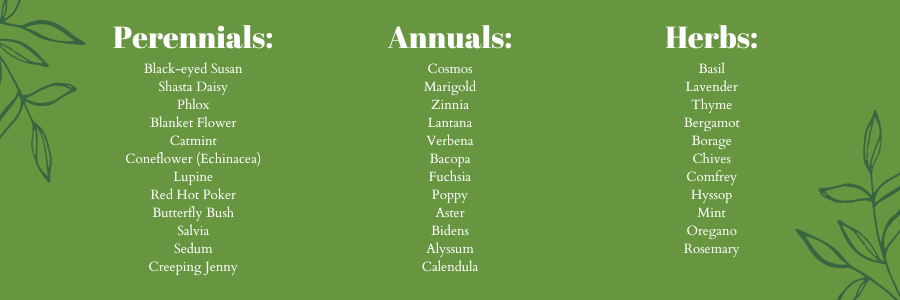Earth as we know it would only survive without pollinators for about four years. It’s true! Our food chain completely hinges on bees, butterflies, hummingbirds, and other beneficial insects. These vital little wonders carry pollen from plant to plant, ensuring proper germination and fruit development not only for the foods we humans consume, but also for the plants that our herbivore friends (livestock) eat.

75% of fruit-setting plants require contact with things that flit and fly. Modern use of broad-spectrum pesticides and insecticides has been shrinking bee populations for decades. It’s beginning to show, as many gardeners find themselves having to hand-pollinate flowers in order to yield a decent harvest.
Commercial growers are noticing pollinators’ absence as well. If we all don’t want to go hungry, we need to act and help save the bees!
Monarch butterflies need our help too—they hover in the danger zone right now, as their specific natural habitats for feeding and breeding dwindle with construction and urbanization. Fields once full of milkweed keep dissolving into new-build subdivisions…a sad scene, as milkweed is the only plant that the monarch caterpillar ever eats.
But here is some good news! We can all help save the world, and it’s easy. You don’t need a big garden or a yard—just a sunny patio or balcony will do to plant beautiful pollinator-attracting flowers and herbs in containers right outside your window.
Here are the items you’ll need to start a container garden pollinator will love:
*A planter with good drainage. The biggest you can manage. Large planters tend to work better than small because more soil volume means less water evaporation and nutrient depletion. Gardeners simply get better results with bigger pots! Ensure there is a hole in the bottom of the planter for water to drain, or your plants’ roots will rot. PRO TIP: place a coffee filter and a few rocks over the hole so your soil won’t leak out too.
*Excellent soil and good fertilizer. Colonial Gardens uses a special custom potting soil blend of rich compost, peat and other growing mediums that have been ph balanced for the local water supply, and it contains a wetting agent that enables better absorption, so you won’t have to water as much. It’s truly phenomenal and worth every penny. A good slow-release fertilizer mixed into the potting mix will kickstart your plants and keep them growing strong throughout the season, too. The difference between not using it and using it is astonishing. Use it.
*Healthy plants! Here’s where the fun really starts! Keep these two things in mind:
-Pollinators are attracted by color, scent and texture. Choose lots of contrast and variety!
-Different flower structures invite different types of pollinators. Hummingbird beaks fit into long, deep flowers, whereas butterflies like to land on something solid and broad. Bees enjoy curved flower centers that are made up of many tiny flowers full of nectar and pollen.
Choose a mix of perennial and annual flowers and throw in some aromatic herbs for attractive scent.

When buying and again when ready to plant, read the information on the tags included in your plants to know how large they’ll become when they mature. Let the plants’ projected height help you make decisions about your container’s design. Position plants that will be tall in the middle or toward the back, mid-sized around the middle and low-growing, creeping ones on the outer rim. This provides the perfect recipe for a container—thriller, filler and spiller—yet it also gives pollinators easy access to every nook and cranny of the flowers’ nectar…which will help them pack on the pollen!
Every flower that a bee, butterfly, or hummingbird lands on, in or near will receive tiny bits of the other flower’s pollen…and then the next, and the next…and that’s how germination works beautifully.
Water your planter when the soil dries down to an inch or two below the surface. Keep those blooms coming by pulling off spent flowers to encourage new growth. Fertilize in a month with a blossom booster to stretch out the season. Let spent flower seeds and foliage stay for a bit—the birds will love you for it.
For extra bonus points, install a bug hotel to give welcome shelter on a wall nearby. Place a shallow tray of pebbles and water in the shade so pollinators can rest and take a drink. Weed and mow a little less so wildflowers can spring up and do their thing. These little kindnesses go a long way to encourage our friends that flit and fly to eat, breed, and replenish…so we can keep doing the same.
Learn more about Pollinators at our Pollinator Fest June 18th-19th
Join Lori’s workshop to learn more about Herb Pots
